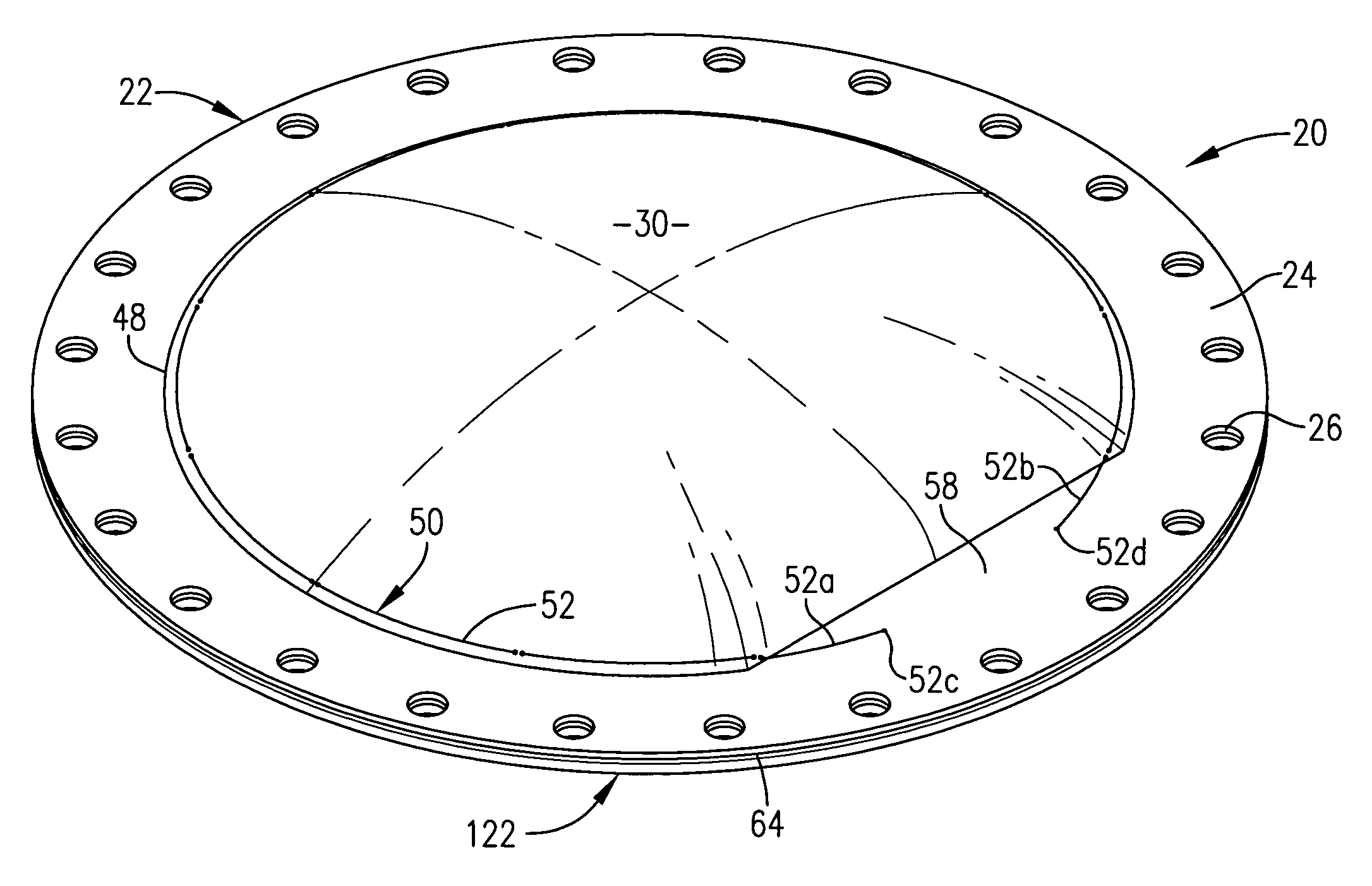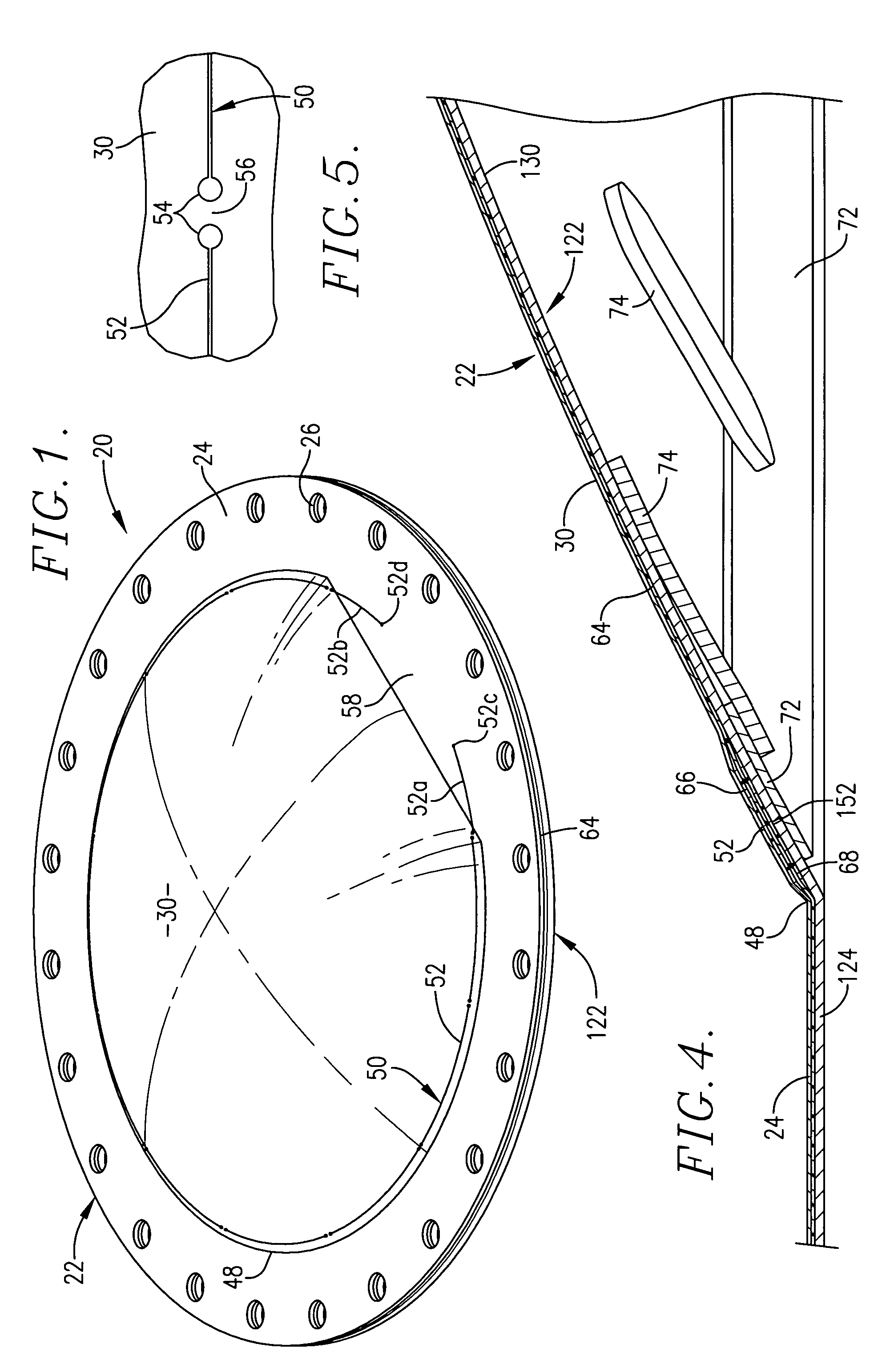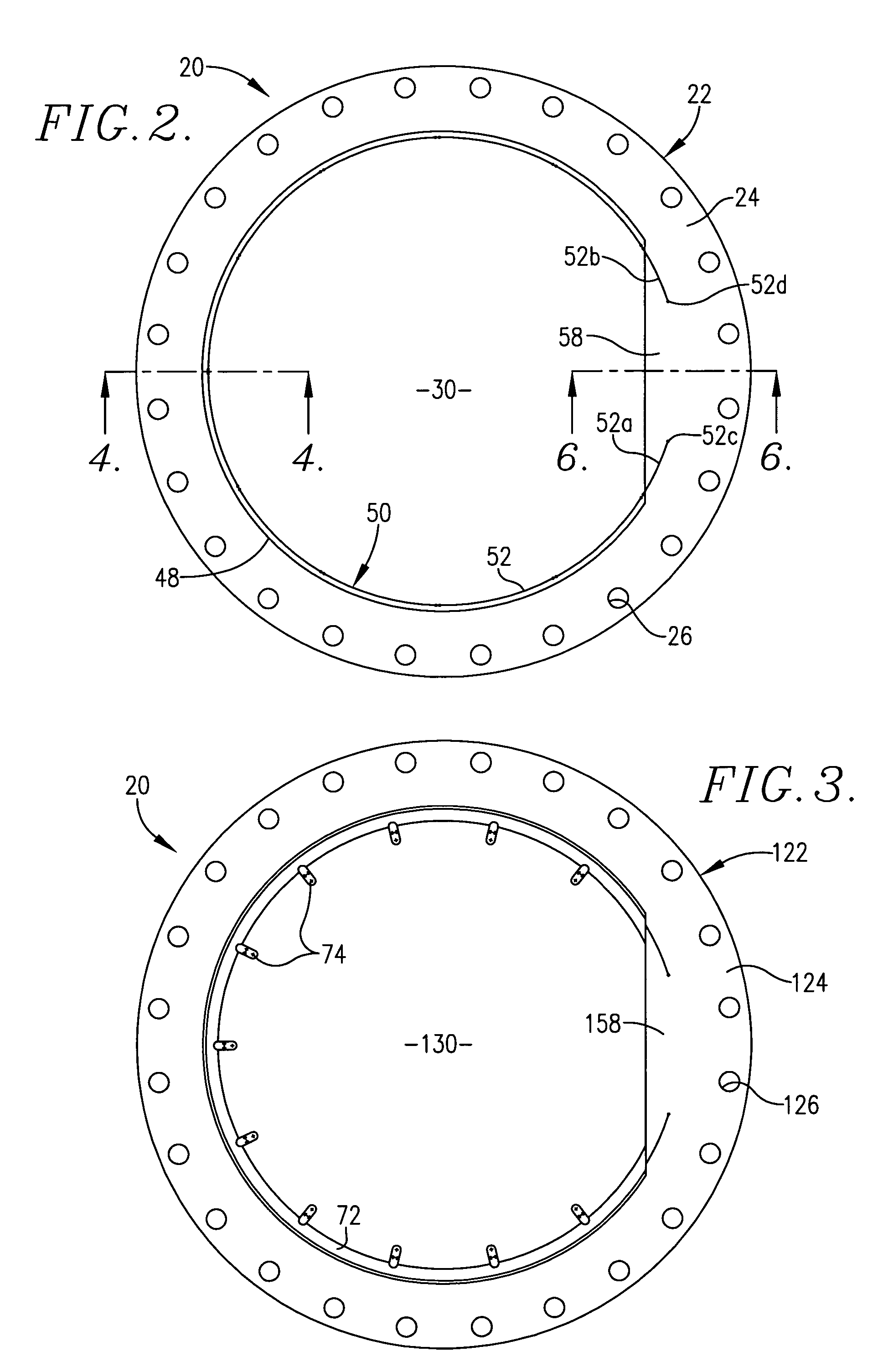Non-fragmenting pressure relief apparatus
a pressure relief apparatus and forward-acting technology, applied in mechanical equipment, transportation and packaging, valve types, etc., can solve problems such as failure to protect devices, dangerous pressure build-ups within enclosures, piping or containment vessels, etc., and achieve the effect of greater thickness
- Summary
- Abstract
- Description
- Claims
- Application Information
AI Technical Summary
Benefits of technology
Problems solved by technology
Method used
Image
Examples
Embodiment Construction
[0029]Non-fragmenting, forward-acting composite pressure relief apparatus in accordance with a preferred embodiment of this invention as shown in FIGS. 1–11 of the drawings and generally designated 20. Pressure relief apparatus 20 is optionally adapted to be clamped between conventional inlet and outlet support members 80 and 82 as shown in FIG. 6. Apparatus 20 is especially useful for protecting processing equipment, pressure vessels, piping and structures including bag houses and the like from overpressures resulting from explosions and other potentially destructive and catastrophic high pressure events. Although apparatus 20 as illustrated in the drawings is of circular configuration, the principals hereof are also applicable to rectangular non-fragmenting pressure relief apparatus.
[0030]Composite pressure relief apparatus 20 includes a topmost or outermost rupture disc 22 normally constructed of a relatively thin corrosion resistant metal material such as stainless steel. Disc 2...
PUM
 Login to View More
Login to View More Abstract
Description
Claims
Application Information
 Login to View More
Login to View More - R&D
- Intellectual Property
- Life Sciences
- Materials
- Tech Scout
- Unparalleled Data Quality
- Higher Quality Content
- 60% Fewer Hallucinations
Browse by: Latest US Patents, China's latest patents, Technical Efficacy Thesaurus, Application Domain, Technology Topic, Popular Technical Reports.
© 2025 PatSnap. All rights reserved.Legal|Privacy policy|Modern Slavery Act Transparency Statement|Sitemap|About US| Contact US: help@patsnap.com



